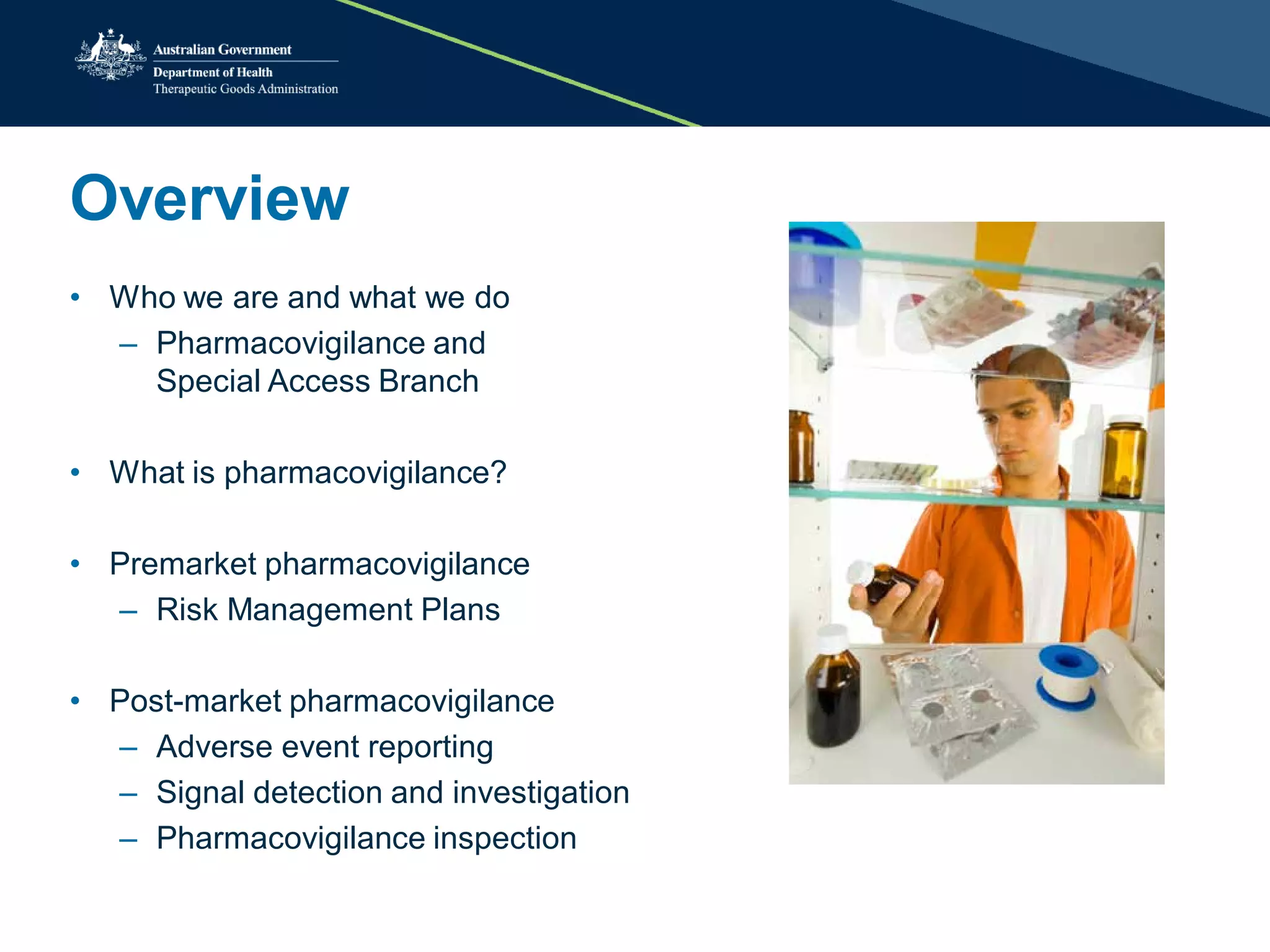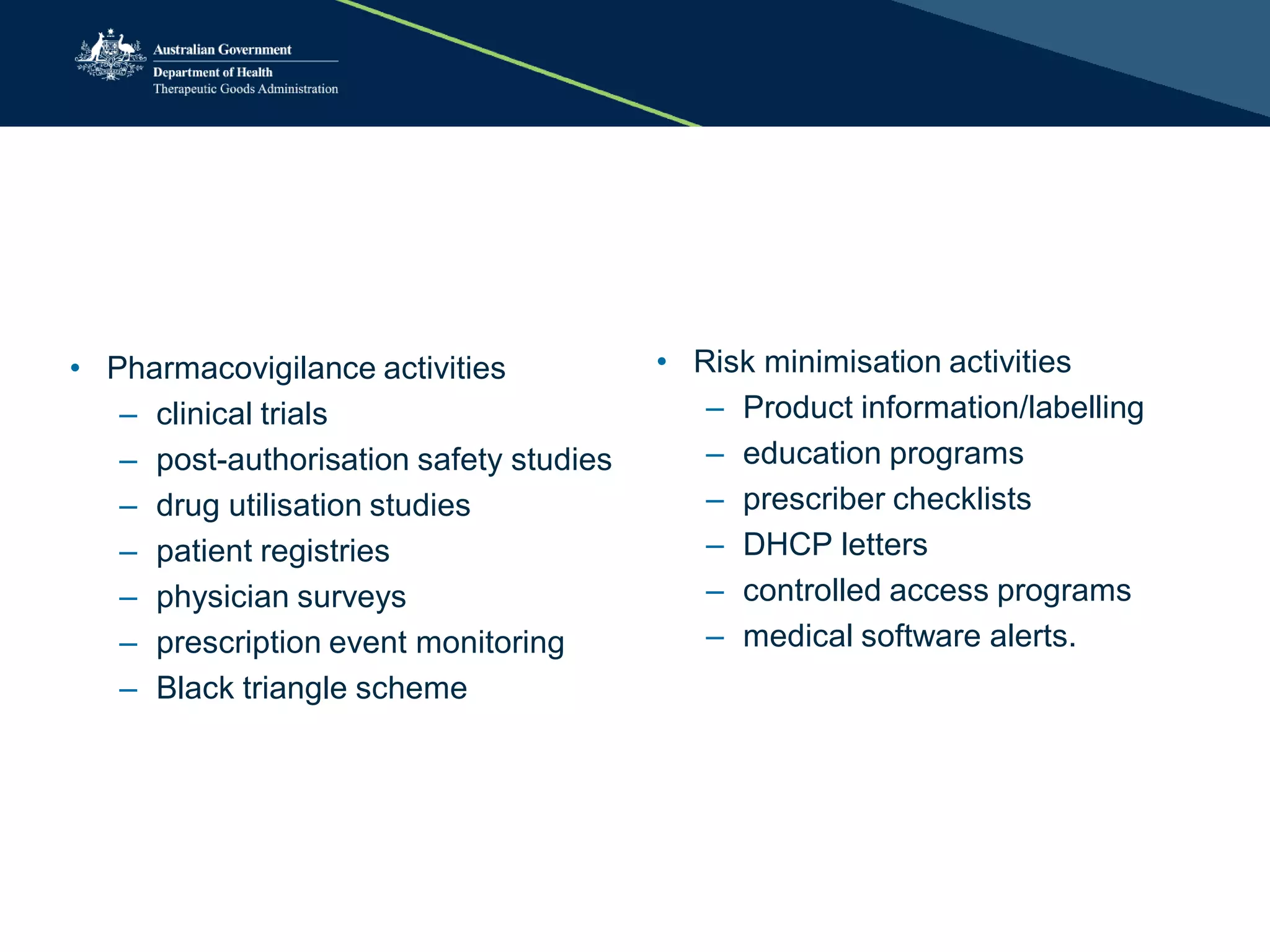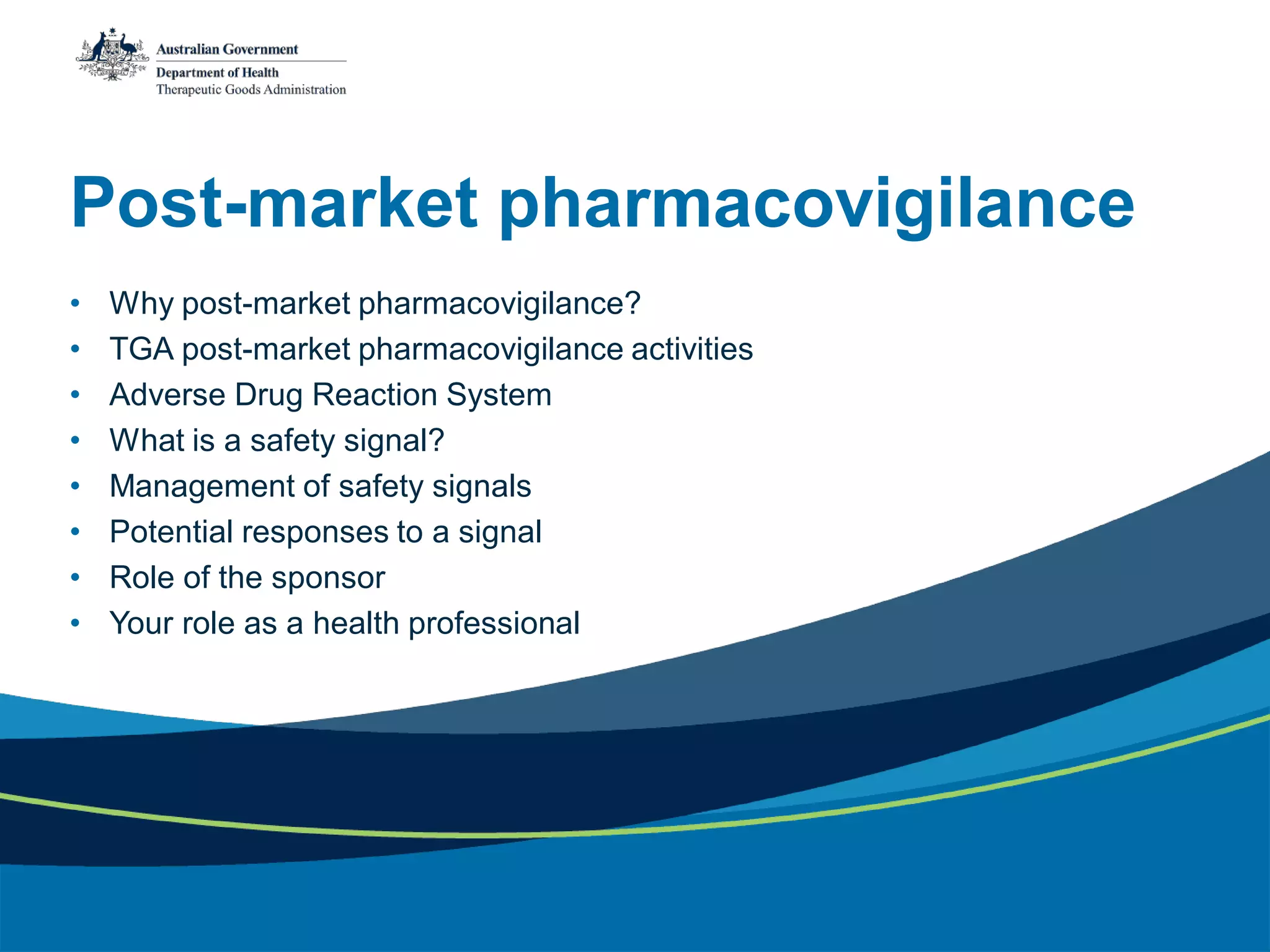The document provides an overview of pharmacovigilance from the perspective of the Therapeutic Goods Administration (TGA) in Australia, detailing its role in monitoring the safety and efficacy of therapeutic goods throughout their lifecycle. It explains the processes involved in both pre-market and post-market pharmacovigilance, including risk management plans, adverse event reporting, and signal detection. Additionally, the document emphasizes the importance of adapting these practices to the Australian context and highlights the ongoing responsibilities of sponsors and health professionals in ensuring patient safety.






















































